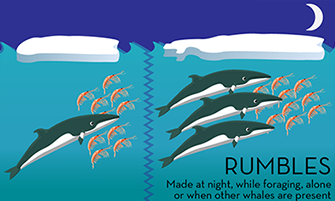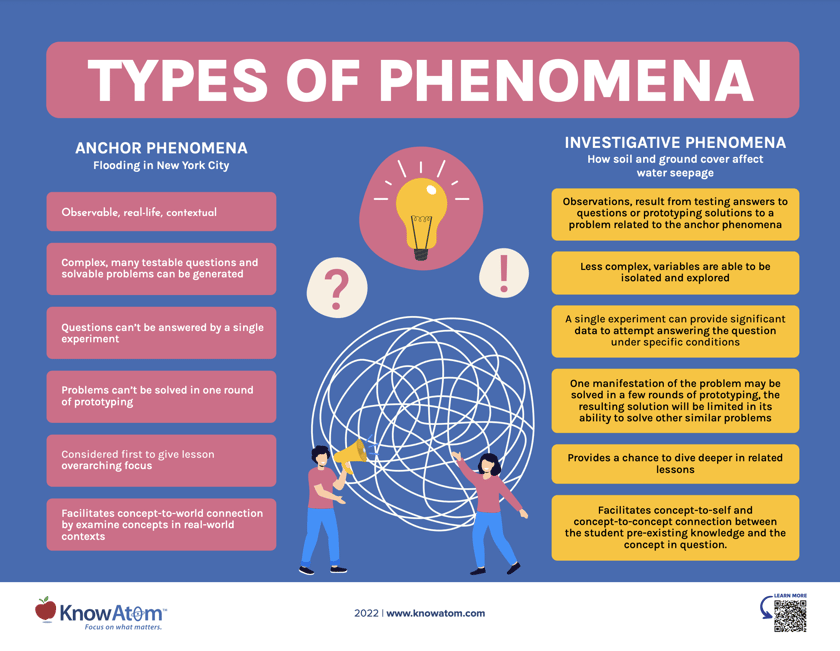Have you ever felt a low-frequency vibration in your chest during a thunderstorm or noticed that your stomach growls loudly when you're hungry? Welcome to the intriguing world of the "Rumble Phenomenon!" This phenomenon isn’t just fascinating but also taps into the science of sound waves and body vibrations. In this post, we’ll dive deep into what causes these rumbles and explore their significance in nature and our daily lives.
What Causes the Rumble?

So, what exactly causes these rumbling sounds we experience in various situations? Let’s break it down:
1. Natural Rumbles in the Environment:
- Thunder: When lightning strikes, it rapidly heats the air, causing it to expand and create a shockwave. This shockwave travels through the atmosphere and gives us that iconic rumble of thunder.
- Earthquakes: The shifting of tectonic plates produces seismic waves. Those waves can create deep rumbles that may be felt miles away from the epicenter.
- Volcanic Activity: When magma moves through the Earth, it can cause rumbling sounds, often preceding an eruption. The vibrations can be quite intense!
2. Biological Rumbles:
- Digestive Sounds: Ever heard your stomach growling? This is due to peristalsis, where muscles in the stomach and intestines contract to move food. The more active your gut, the louder the rumble!
- Body Vibrations: Our bodies can also produce low-frequency sounds when we move or speak. For example, a deep voice resonates and can create a rumbling effect, especially in enclosed spaces.
In summary, the Rumble Phenomenon encompasses a variety of natural and biological sounds. Each instance showcases the fascinating interplay between energy, movement, and sound waves. Whether it’s the rumble of thunder or the growl of your stomach, we are surrounded by these vibrations that connect us with both the Earth and our own bodies.
Also Read This: Is the Rumble Fruit Good in Blox Fruits? A Power Review
The Role of Vibrations and Sound Waves

Have you ever felt a sudden rumble during a thunderstorm or a distant roar from an approaching storm? What you're experiencing is the fascinating world of vibrations and sound waves. These elements are crucial in understanding the rumble phenomenon, and they play a starring role in how we perceive these sounds.
So, how does it all work? At its core, a rumble is a low-frequency sound wave that travels through the air, often caused by natural events like thunder or even man-made occurrences such as explosions. The frequency of these vibrations typically falls below 20 Hz, which is why we often perceive them more as a sensation rather than a distinct sound.
One exciting aspect to consider is how sound waves interact with the environment. When a sound wave is produced, it creates a pressure wave that can travel over long distances. As it moves, it causes the surrounding air particles to vibrate. This is where things get interesting: the density and temperature of the air can significantly affect how these waves propagate. For example:
- Warm air tends to carry sound waves better than cold air, enhancing the rumble's reach.
- Obstacles like mountains or buildings can reflect or absorb sound, altering how we experience the rumble.
Moreover, vibrations can also resonate with solid structures. This is why you might feel the rumble of an approaching train long before you hear it — the vibrations travel through the ground and into your body, creating a physical sensation. Isn't it fascinating how our body responds to these invisible forces?
In essence, the science behind vibrations and sound waves is a beautiful interplay of physics and perception, contributing to the rich tapestry of experiences that we associate with rumbles. Whether it's thunder rolling across the sky or the bass thumping at a concert, these sound waves connect us to the world in surprising ways.
Also Read This: Has CM Punk Ever Won a Royal Rumble? WWE History Explored
Real-Life Examples of Rumble Experiences

The rumble phenomenon isn't just limited to scientific theories; it manifests in various real-life experiences that we all can relate to. Let’s explore some intriguing examples that showcase how the rumble phenomenon impacts our everyday lives.
1. Thunderstorms
Perhaps the most common experience of rumbling is during thunderstorms. When lightning strikes, it creates a sudden expansion of air, producing a shockwave that we perceive as thunder. The rumble you hear can vary based on the distance of the storm, with closer storms yielding a sharper crack while distant storms provide a rolling rumble. This phenomenon is not only dramatic but is also a reminder of nature's power!
2. Earthquakes
Another intense example is the rumbling experienced during earthquakes. As tectonic plates shift and grind against each other, they release energy that causes the ground to shake. This shaking often produces a deep rumbling sound that can last for several seconds, leaving us in awe of the Earth's dynamic nature. People living in earthquake-prone areas often describe this experience as feeling like a heavy truck is passing by, even when there's no vehicle in sight.
3. Music and Concerts
On a lighter note, rumbles can be felt at music concerts, especially those featuring bass-heavy genres like hip-hop or electronic dance music. The low-frequency sounds produced by large speakers create vibrations that can be felt in your chest, making the experience immersive. It's a communal sensation that connects everyone in the crowd, enhancing the overall enjoyment of the performance.
4. Natural Events
Lastly, natural events like volcanic eruptions can produce astounding rumbling sounds. The eruption generates sound waves that can travel hundreds of miles, and the rumble can be felt long before the visual effects of the eruption are visible. Just think about the power of nature — it’s awe-inspiring!
These examples highlight the diversity of rumble experiences and the ways they enrich our lives. From the fear and fascination of a thunderstorm to the joy of a concert, rumble phenomena resonate deeply within us, reminding us of the world’s complexity and beauty.
Also Read This: How to Play Rumble on Discord and Enjoy Multiplayer Action
5. Scientific Studies and Research on Rumbles
The rumble phenomenon has sparked curiosity among scientists for decades. Researchers have delved into the acoustics, geology, and even psychology of rumbles to understand their origins and implications. One fascinating study conducted by the University of California, Berkeley focused on the acoustics of low-frequency sounds, which are often associated with natural events like earthquakes and volcanic activity. The researchers found that these sounds could travel long distances without significant loss of energy, leading to unexpected rumbles being heard far from their source.
Another significant area of research involves seismology. Scientists have used advanced seismic monitoring systems to analyze rumbles generated by tectonic shifts. These systems can detect vibrations and classify them, helping us understand how the Earth's crust behaves. For instance, a study published in the Journal of Geophysical Research revealed that certain types of rumbles correlate with specific geological formations, giving insights into the Earth's internal processes.
Rumbles are not just physical phenomena; they also carry emotional weight. A team from Harvard University explored the psychological effects of rumbles on people. They discovered that rumbles can evoke feelings of anxiety and unease, particularly in areas prone to natural disasters. Their research also indicated that public perception of rumbles is often influenced by media coverage and personal experiences, which can amplify emotional responses.
Additionally, scientists have studied animal behavior in relation to rumbles. Many animals exhibit heightened senses before a rumble occurs, suggesting they can detect vibrations or sounds that humans cannot. For example, a study on elephants showed that they use low-frequency rumbles to communicate over long distances, and they can sense seismic activity before it happens, alerting their herds to potential danger.
In summary, the scientific exploration of rumbles encompasses a variety of disciplines, from acoustics and geology to psychology and animal behavior. Each study adds a piece to the puzzle, helping us to understand not just the nature of rumbles, but also their broader implications for both the environment and human society.
6. How Different Cultures Interpret Rumbles
Across the globe, rumbles have been interpreted in numerous fascinating ways, woven into the fabric of cultural beliefs and practices. In many indigenous cultures, rumbles are seen as messages from the Earth or the spirits residing within it. For instance, the Navajo people interpret rumbles as a sign of change or a reminder to respect nature's power. They often hold ceremonies to honor these natural occurrences, reinforcing their connection to the Earth.
In contrast, some cultures view rumbles as omens or portents of disaster. In Japan, for example, the term “yurei” refers to the spirits of those who have died in unnatural circumstances, and rumbling sounds are sometimes associated with these spirits. This belief has led to the practice of rituals aimed at appeasing these spirits, reflecting a deep respect for the forces of nature.
- Western Culture: In many Western societies, rumbles are often linked to scientific explanations. People may view them as merely the result of natural phenomena like earthquakes, thunder, or even machinery. However, folklore still exists; stories of “ground shaking” often surface in discussions about impending doom or significant life changes.
- African Traditions: In several African cultures, rumbles are considered a warning from the gods. They are interpreted as a call to action, prompting communities to come together for rituals or communal gatherings to seek guidance and protection.
- South American Beliefs: In the Andes, certain indigenous groups believe that rumbles are the voices of ancestors communicating with the living. They may perform traditional dances or offerings to honor these ancestors, reinforcing the connection between past and present.
These diverse interpretations reflect humanity's attempt to make sense of the natural world and its profound mysteries. Rumbles, whether seen as messages, omens, or mere science, have a unique place in the cultural narratives of societies worldwide, reminding us of our interconnectedness with the Earth and each other.
 admin
admin








